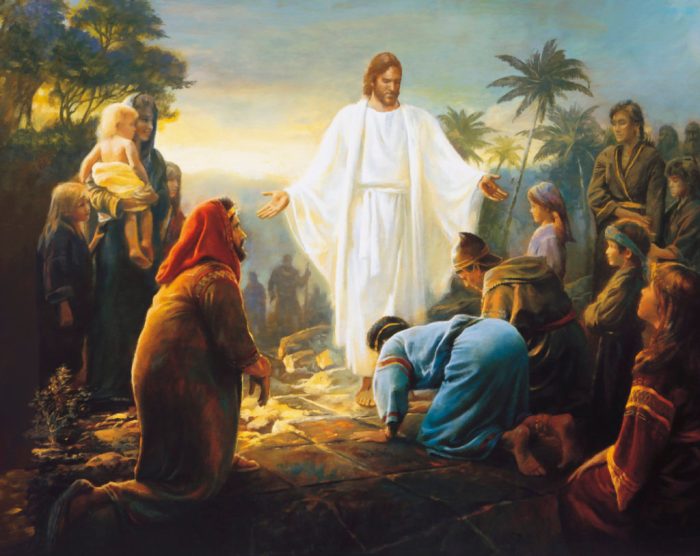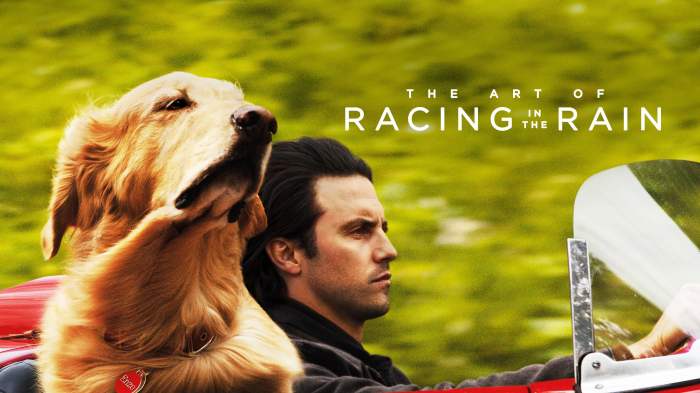That which we manifest is before us the art of racing in the rain – That Which We Manifest Is Before Us: The Art of Racing in the Rain isn’t just a compelling novel; it’s a masterclass in mindset and manifestation. The story weaves together the high-octane world of professional racing with profound insights into the power of belief. Through the journey of Denny Swift, a gifted race car driver, we witness how his inner world directly impacts his performance on the track, offering a compelling narrative on the inextricable link between thought and reality.
This exploration delves into the core principles of manifestation, examining how Denny’s beliefs, both positive and negative, shape his destiny, both on and off the track.
We’ll dissect Denny Swift’s character arc, exploring his evolution from a driven but sometimes flawed individual to a more self-aware and ultimately successful racer. The narrative cleverly employs the metaphor of racing – the speed, the strategy, the unpredictable elements – to mirror the unpredictable yet ultimately controllable journey of self-discovery and personal growth. We’ll analyze pivotal scenes, examine the symbolic significance of rain, and ultimately uncover how the book’s central message translates to real-world application, empowering readers to harness the power of their own minds.
That Which We Manifest Is Before Us: Deconstructing the Art of Racing in the Rain: That Which We Manifest Is Before Us The Art Of Racing In The Rain
Garth Stein’s The Art of Racing in the Rain is more than just a captivating story about a racing dog; it’s a profound exploration of manifestation, the power of belief, and the intricate relationship between mindset and achievement. Through the narrative voice of Enzo, a wise and philosophical canine companion to aspiring race car driver Denny Swift, the novel masterfully weaves together the thrilling world of motorsports with deeply insightful reflections on life, love, and the art of living intentionally.
This analysis delves into the book’s core themes, character development, and metaphorical richness, revealing the profound wisdom embedded within its seemingly simple narrative.
The Book’s Central Theme: Manifestation and Racing
The interconnectedness of manifestation and racing forms the very heart of The Art of Racing in the Rain. Enzo, narrating Denny’s life, constantly emphasizes the power of visualization and positive thinking. Denny’s success on the racetrack directly correlates with his mental state. When he’s confident and focused, visualizing the perfect line and anticipating his opponents’ moves, he excels. Conversely, moments of self-doubt or distraction often lead to mistakes and setbacks.
For instance, Denny’s early struggles stem from a lack of self-belief, hindering his performance despite his natural talent. Only when he embraces the philosophy of manifestation, internalizing the mantra “that which we manifest is before us,” does he truly begin to reach his full potential, both in his racing career and his personal life. This principle is not limited to the racetrack; it applies equally to his relationships, his struggles with loss, and his ultimate aspirations.
Character Analysis: Denny Swift’s Journey, That which we manifest is before us the art of racing in the rain
Denny Swift’s character arc is a testament to the transformative power of self-belief and perseverance. Initially, he’s plagued by self-doubt and struggles to harness his potential. His experiences, both the triumphs and heartbreaks on and off the track, profoundly shape his understanding of manifestation. The loss of loved ones forces him to confront his own mortality and re-evaluate his priorities.
Through these trials, Denny learns the importance of resilience, the significance of living in the present moment, and the power of accepting the things he cannot control. He learns to focus on his own journey, his own internal strength, rather than constantly comparing himself to others. This journey of self-discovery is intertwined with his understanding of manifestation, demonstrating that inner peace and self-acceptance are just as important as skill and determination.
The Role of Chance and Control
The novel explores the delicate balance between chance and control in achieving one’s goals. While Denny’s hard work, dedication, and positive mindset significantly contribute to his success, external factors also play a role. Unexpected accidents, unforeseen circumstances, and the unpredictable nature of racing itself constantly test his resilience. For example, a crucial race might be influenced by weather conditions or a competitor’s unexpected maneuver.
However, Denny’s response to these events—his ability to adapt, learn, and maintain his positive outlook— ultimately determines the outcome. A hypothetical scenario: If Denny had allowed a particularly devastating loss to consume him with self-doubt, his subsequent races might have been significantly affected, potentially hindering his career trajectory. His ability to bounce back and re-focus is key.
Metaphorical Interpretations of Racing
Racing in The Art of Racing in the Rain serves as a powerful metaphor for life itself. The rain, often a symbol of adversity and challenge, represents the unexpected obstacles and setbacks that life throws our way. The act of racing itself symbolizes the journey of life, with its twists, turns, and moments of both exhilarating triumph and devastating defeat. The different stages of a race, from qualifying to the finish line, mirror the various phases of personal growth and self-discovery.
The following table further illustrates the multifaceted metaphors employed in the novel.
| Metaphor | Description | Relation to Manifestation | Relation to Racing |
|---|---|---|---|
| Rain | Represents unforeseen challenges and obstacles in life. | Tests the strength of one’s belief and ability to maintain a positive mindset despite adversity. | Affects race conditions, requiring adaptation and strategic decision-making. |
| The Racetrack | Symbolizes the journey of life, with its twists, turns, and unexpected events. | The path to achieving one’s goals, requiring focus, determination, and the ability to visualize success. | The physical space where the race unfolds, testing the driver’s skills and resilience. |
| The Finish Line | Represents the ultimate goals and aspirations in life. | The culmination of the manifestation process, a testament to one’s belief and perseverance. | The final point of the race, signifying victory or defeat. |
| The Car | Represents the individual’s physical and mental capabilities. | The vehicle through which one’s intentions and beliefs are manifested into reality. | The essential tool for achieving success in the race. |
The Power of Belief and Mindset

Denny’s belief system profoundly impacts his performance and relationships. Initially, his self-doubt hampers his racing ability and strains his personal connections. However, as he learns to cultivate a more positive mindset, focusing on his strengths and embracing challenges, his performance improves significantly, and his relationships deepen. The death of his wife, Eve, is a pivotal moment that tests his belief system.
His initial despair gives way to a gradual acceptance, fueled by his memories of Eve and her unwavering belief in him. This shift in mindset allows him to find solace, resilience, and renewed purpose. His journey highlights the importance of maintaining a positive outlook, even in the face of unimaginable loss, demonstrating that a positive mindset is crucial for navigating life’s challenges and achieving one’s goals.
Visual Representation: Key Scenes

One pivotal scene unfolds during a crucial race. The setting is a rain-soaked track, the air thick with tension and the scent of burning rubber. The lighting is dramatic, with flashes of lightning illuminating Denny’s determined face as he expertly navigates the treacherous conditions. His focus is unwavering, his eyes fixed on the track ahead, reflecting the unwavering belief in his ability to succeed.
The atmosphere is electric, a palpable sense of anticipation hanging in the air as he pushes himself and his car to their limits. The scene underscores the intensity and pressure of competition, while simultaneously showcasing Denny’s mental fortitude.
Another significant scene depicts Denny’s quiet moments of reflection by the lake, the setting sun casting long shadows across the tranquil water. The atmosphere is serene, a stark contrast to the high-octane world of racing. Denny’s expression is one of peaceful contemplation, his thoughts turning to Eve and the lessons he has learned. The imagery conveys a sense of quiet strength and acceptance, highlighting the importance of finding balance between the challenges of life and the moments of peace and reflection.
End of Discussion
Ultimately,
-That Which We Manifest Is Before Us: The Art of Racing in the Rain* serves as a powerful reminder that our internal landscape directly shapes our external reality. Denny Swift’s journey isn’t just about winning races; it’s a testament to the transformative power of belief, resilience, and the conscious cultivation of a positive mindset. The book’s enduring appeal lies in its ability to translate complex philosophical concepts into a relatable and engaging narrative, leaving readers inspired to take control of their own destinies and manifest their desired outcomes.
By understanding the interconnectedness between thought, action, and result, we can unlock our own potential for success, mirroring Denny’s triumphs and learning from his setbacks on the road to achieving our own personal victories.
Quick FAQs
What is the significance of the dog, Enzo, in the story?
Enzo acts as a narrator and offers a unique perspective on Denny’s life, providing insightful commentary and philosophical observations about life and death.
Is the book suitable for all ages?
While generally appropriate for mature young adults, some themes might be better suited for older readers due to the exploration of complex emotions and life experiences.
What are some key takeaways from the book beyond manifestation?
The book explores themes of perseverance, the importance of relationships, and accepting life’s uncertainties, offering valuable life lessons applicable beyond the context of racing.
How does the book handle the topic of death and loss?
The book addresses these themes with sensitivity and poignancy, highlighting the importance of cherishing life and accepting its inevitable end.